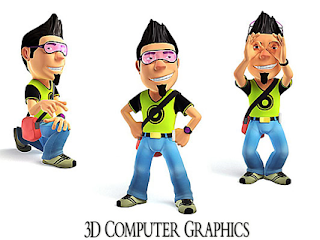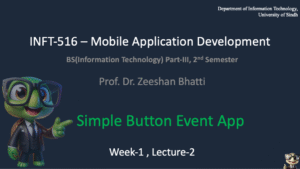Course: Multimedia Technology
Meta Description:
Dive into the world of multimedia technology with an in-depth introduction covering the basics of multimedia, its elements, characteristics, applications, and the latest developments in VR, AR, and MR. Perfect for beginners looking to understand multimedia’s role in digital media, games, and interactive experiences!
- What is Multimedia?
- Definition of Multimedia
- Elements of Multimedia
- Components of Multimedia
- Applications of Multimedia Technology
- Characteristics of a Multimedia System
- Delivery of Multimedia
- Interactivity in Multimedia
- Understanding Hypertext and Hypermedia
- Current Multimedia Projects
- Overview of Multimedia Software Tools
- Multimedia in Games
- Virtual Reality (VR)
- Augmented Reality (AR)
- Mixed Reality (MR)
- Frequently Asked Questions
What is Multimedia?
In today’s digital age, multimedia has become essential across industries, from entertainment and education to marketing and medicine. But what is multimedia, and how has it become so integral? Let’s explore what makes up multimedia, the tools behind it, and how it’s evolving.
Definition of Multimedia
Multimedia refers to the integration of multiple forms of media, such as text, graphics, audio, video, and animation, to convey information. This blend of content types enhances the user experience, making content more engaging, interactive, and informative. Whether it’s an educational video, an interactive game, or a digital ad, multimedia combines different media elements for a dynamic experience.
WHAT IS IT?
Oxford English Dictionary:

“A. adj. Using more than one medium of communication, artistic expression, etc.;
( Computing ) designating or relating to applications which incorporate a number of media, such as text, audio, video, and animation, esp. interactively.
“Multimedia
means that computer information can be represented through audio, video, and animation in addition to traditional media (i.e., text, graphics drawings, images).”
A good general definition is:
“Multimedia is the field concerned with the computer-controlled integration of text, graphics, drawings, still and moving images (Video), animation, sound, audio, and any other media where every type of information can be represented, stored, transmitted and processed digitally.”
“A Multimedia Application is an Application which uses a collection of multiple media sources e.g. text, graphics, images, sound/audio, animation and/or video.”
Elements of Multimedia
Multimedia comprises several elements, each contributing a unique characteristic that enhances the overall experience.
Graphics (Images and Pictures)
Graphics, often in the form of images or illustrations, provide a visual dimension to multimedia. They can be static (such as photographs or illustrations) or dynamic, depending on the application’s requirements. Graphics enrich content by drawing attention, explaining ideas, and reinforcing messages.
Audio
Audio is essential in multimedia, adding sound to the visual elements. Sound effects, music, or narration can intensify emotions, improve understanding, and support learning objectives. Audio files come in various formats, including MP3 and WAV, and are often used in tutorials, games, and presentations.
Video
Video combines images and sound, creating a dynamic form of multimedia content. Videos are highly effective in conveying stories, demonstrating processes, or explaining complex concepts. From YouTube videos to corporate presentations, video remains a popular multimedia element.
Text
Text is one of the foundational elements of multimedia, serving as the primary means of communication in many applications. While images and videos can communicate ideas, text is essential for providing context, instructions, or additional information.
Animation
Animation brings objects or illustrations to life, often used to visualize ideas in a more engaging way. Animation can range from simple movements, like sliding transitions, to complex 3D simulations. In fields like education and marketing, animation is frequently used to explain concepts and captivate audiences.
Components of Multimedia
Multimedia relies on specific components to function effectively:
- Hardware: Includes devices like computers, cameras, microphones, and VR headsets.
- Software: Programs such as Photoshop, Adobe Premiere, and Unity are crucial for creating multimedia.
- Storage: Multimedia files can be large, necessitating robust storage solutions like cloud storage, SSDs, and external drives.
- Networks: Fast internet and network connections are essential, especially for online content delivery and cloud-based tools.
Applications of Multimedia Technology
Multimedia has a wide range of applications:
- Education: Interactive e-learning tools and educational videos enhance learning outcomes.
- Entertainment: Movies, music, and games utilize multimedia to create immersive experiences.
- Marketing: Digital ads and social media use multimedia for effective brand promotion.
- Healthcare: Medical imaging and virtual surgery simulations are advanced applications of multimedia.
- Business: Corporate presentations and training modules make use of multimedia to improve employee engagement.
Characteristics of a Multimedia System
Multimedia systems have distinct characteristics that differentiate them from other systems:
- Interactivity: Allows users to engage with content directly, often via touch or voice.
- Integration: Multimedia systems combine various elements, such as text, audio, and images.
- Digital Representation: Multimedia relies on digital data to ensure high-quality output.
- Real-time Performance: Some systems provide immediate feedback, crucial in gaming and simulations.
Delivery of Multimedia
Multimedia delivery can be divided into various modes:
- Local Systems: Offline multimedia, like software installed on a computer.
- Web-based Delivery: Streaming services, online games, and interactive websites deliver content online.
- Mobile Delivery: Smartphones and tablets are significant platforms for multimedia applications, including mobile apps, social media, and games.
Interactivity in Multimedia
Interactivity is a defining feature of modern multimedia, enabling users to participate actively. Interactive multimedia can range from simple quizzes to advanced simulations, where users’ actions impact the outcome. In gaming, for instance, players’ choices determine their progression, making the experience personalized and engaging.
Understanding Hypertext and Hypermedia
Hypertext and hypermedia are concepts essential to multimedia.
- Hypertext: A text that contains links to other texts, often found in web pages.
- Hypermedia: Extends hypertext by integrating multimedia elements, such as audio, video, and animations, along with hyperlinks.
Together, hypertext and hypermedia create interactive experiences, particularly in online content.
Current Multimedia Projects
Currently, multimedia projects are expanding across various domains, including:
- Educational Apps: Interactive learning platforms for all age groups.
- Game Development: 3D graphics, VR, and AR are becoming mainstream in gaming.
- Social Media: Platforms like Instagram and TikTok utilize multimedia heavily for engagement.
- Health Tech: Multimedia simulations assist in medical training and diagnostics.
Overview of Multimedia Software Tools
Multimedia creation relies on specialized software tools for each element:
- Audio Tools: GarageBand, Audacity, and Pro Tools for sound mixing.
- Music Sequencing: FL Studio and Ableton for composing and arranging music.
- Video Editing: Adobe Premiere Pro, Final Cut Pro for video production.
- Animation Software: Blender, Maya, and After Effects for animation.
- Graphics and Image Editing: Photoshop, Illustrator for image manipulation.
Multimedia in Games
Gaming is one of the most significant applications of multimedia technology, utilizing graphics, audio, video, and interactivity to create immersive experiences. Games have evolved from simple pixelated formats to complex, realistic simulations, thanks to advancements in 3D graphics, AI, and interactive design.
Virtual Reality (VR)
Virtual Reality creates immersive environments where users can interact within a computer-generated 3D space. VR is revolutionizing gaming, training, and educational sectors by simulating real-life experiences.
Augmented Reality (AR)
Augmented Reality overlays digital content onto the real world, blending virtual and real-world elements. Popular applications include AR-based games and apps, as seen in Pokemon Go, and various educational tools that enhance learning by bringing concepts to life.
Mixed Reality (MR)
Mixed Reality combines elements of VR and AR, allowing virtual objects to interact with the real world in real-time. MR technology is used in training simulations, medical imaging, and advanced educational tools, offering an interactive experience beyond traditional AR and VR.
Frequently Asked Questions
What is multimedia technology?
Multimedia technology involves using multiple forms of media, like text, images, audio, and video, to create a dynamic and interactive user experience.
What are the primary elements of multimedia?
The primary elements include graphics, audio, video, text, and animation, each adding a unique dimension to multimedia content.
How does multimedia differ from hypermedia?
While multimedia combines different types of media, hypermedia specifically integrates multimedia with hypertext, allowing for interactive and linked content.
What are some examples of multimedia software tools?
Popular multimedia software includes Photoshop for image editing, Premiere Pro for video editing, Blender for 3D animation, and GarageBand for audio production.
How are VR, AR, and MR different?
VR immerses users in a virtual environment, AR overlays digital elements in the real world, and MR combines both, allowing real-world and virtual objects to interact.
Why is multimedia important in education?
Multimedia enhances learning by making content more engaging, interactive, and accessible, accommodating various learning styles and increasing information retention.
With multimedia technology, the possibilities for creating interactive and immersive experiences are endless. This dynamic field continues to evolve, shaping how we interact, learn, and experience digital content.
Download Slide:
Multimedia Technology Chapter 1 Introduction



